| Behind the Plate |
|
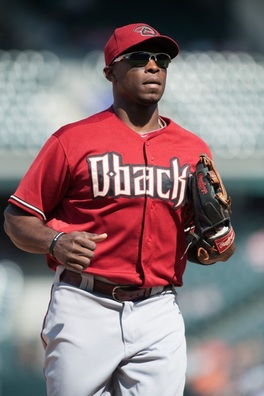 Justin will be joining his brother in the Atl By: Aidan Flynn
Finally! Finally! The general public is finally pardoned from hearing another Justin Upton trade rumor (at least for the near future), as Upton was mercifully traded to the Atlanta Braves on Thursday morning. Upton, 25, will join big brother, B.J. Upton, 28, in an already extremely talented Atlanta outfield in hopes of achieving another playoff berth. In exchange for the services of Upton and third baseman Chris Johnson, the Arizona Diamondbacks acquired 3B/LF Martin Prado, and minor leaguers Randall Delgado, Zeke Spruill, Nick Ahmed, and Brandon Drury. The obvious headliner in this trade is Upton, an incredibly gifted, yet enigmatic and inconsistent player who is coming off a disappointing 2012 in which he only hit .280/.355/.430 and put up an underwhelming 2.1 WAR. However, Upton has also shown the ability to do great things, and at times, has lived up to the ceiling that made him a number one overall pick in a loaded 2005 draft class. Just one year ago, with the same trade rumors swirling about, Upton was coming off a career year, in which he finished fourth in the NL MVP and had an excellent .289/.369/.529 line. Keep in mind, Upton produced this career year at 24 years of age; one would rightfully assume that he would only continue to improve as he matured both physically and as a ballplayer. Instead, here we are one year, later, wondering what kind of player he really is and what the Braves are getting. Looking at Upton's career numbers, he is owner to some interesting trends. First is his affinity for alternating successful seasons with lackluster seasons sandwiched in between. Just using OPS+ to demonstrate, Upton's full seasons (with his age in parenthesis) look like this: 2008: 107 OPS+ (20) 2009: 129 OPS+ (21) 2010: 110 OPS+ (22) 2011: 141 OPS+ (23) 2012: 107 OPS+ (24) Clearly, Upton has an interesting little trend going on here but honestly seems purely coincidental as I could not find anything explaining this oddity. Nevertheless, it could very well portend good things for Upton this upcoming season. The other interesting quirk with Upton is much more definite and serious than the previous example, as it is one that could very well have an impactful difference on his future performance. That quirk is that Upton has quite noticeable home/road splits, and going from hitter haven Chase Field to more neutral Turner Field certainly shouldn't help his cause. In the desert, Upton has hit a red-hot .307/.389/.548; on the other hand, away from his friendly home park, Upton has hit only .250/.307/.406 and is undoubtedly a below-average hitter. This obviously is a huge cause for concern, and one that should clearly be watched as the season progresses. This is not a definitive declaration that Upton can't hit away from home. In fact, there are a decent number of examples that have transitioned very well after leaving friendly home parks and going to pitcher's parks (Carlos Quentin is a good, recent example). Furthermore, Upton faced a slew of extremely tough pitchers parks while playing in the NL West (see AT&T Park, Petco Park, and Dodger Stadium), all of which probably helped skew his aforementioned poor road performance. Just as things usually aren't as extreme as they first appear to be, I would figure Upton's 2013 performance will fall somewhere between his home/road splits; the law of averages eventually have to give in. One final note with Upton is that he will probably play left field in deference to Gold Glove right fielder Jason Heyward. Upton's defense in right has been slightly above average for his career, always with at least a positive DRS rating but never more than 8 runs saved in a season. Thus, a move to left could result in an even stronger defensive performance considering that left field is an easier position to field. As for the return package for Upton, it is quite underwhelming in my opinion. My favorite player going to the desert is utility man Martin Prado, at the heels of a 5+ win season for Fredi Gonzalez's Braves. Prado is an extremely well rounded player, one that can hit for average (career .295 hitter), has excellent gap power (career high 42 2B last year), play solid defense (18 DRS last year), and can even run a bit (17 SBs in 2012). Prado is expected to play third base for the Snakes this upcoming year and is a +23 run defender at the hot corner for his career. One catch with Prado is that he is only under contract for one year. Upton, on the other hand, has another three years of extremely affordable club control (only $38 million due over that time). If the Snakes can't resign Prado, they take an already disappointing haul and make it an even harder pill to swallow. Essentially, if Prado walks, the Snakes are stuck with a back end starter in Randall Delgado and three fringy prospects that have miniscule big league chances. Speaking of the prospects in the trade, the only one of real note is Randall Delgado. Delgado possesses a low 90's fastball and a decent curve, both of which inducing plenty of ground balls (50 % last year). Delgado still faces control issues, as evidenced by below average 4.1 BB/9 rate; if he cleans this up he could be a solid mid-rotation starter; if not, he should fit nicely into the back end of the starting rotation. First Impressions: Winner: Braves Upton clearly has his faults and remains a ways away from reaching his ceiling-less potential. With that said, Upton remains a very good player, one capable of playing on both sides of the ball and is still to reach his physical prime as a player. Even if Upton doesn't maximize his talents, the Braves did not give up much in return. I think at the very least, Upton and Prado cancel each other out and the Braves remain a playoff team while getting younger and more cost efficient in the process. At the very best, Upton matures into a perennial all-star candidate and closes the gap between the Braves and baseball's best team, the Nationals. In addition, one cannot overrule the change of scenery needed by Upton following the continuous trade talks. Overall, barring a complete collapse for Upton, I see this turning out well in Atlanta's favor. Loser: Diamondbacks A situation handled poorly from the start, the Diamondbacks finally rid themselves of the perpetual Upton trade rumor headache. Maybe the Diamondbacks had to deal Upton. They severed relations with him so badly it just had to be done. However, from a purely baseball standpoint, I don't think the package received was one worthy of Upton's talents. Although Prado is a very good player, he is only under contract for one year, and the rest of the prospect pieces honestly just are not very impressive. A player with Upton's current ability, future potential, and cost-controlled affordability should bring in a package better than the one received today. Five years from now, maybe Prado resigns and the prospects contribute at the big league level. However, I am highly skeptical of the prospects and wonder what the benefits of acquiring an older player with contractual uncertainty are. To me, the Diamondbacks are a clear loser in this trade. 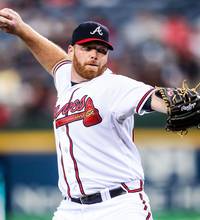 Tommy Hanson In a classic, one-for-one, baseball trade, the Los Angeles Angels of Anaheim sent reliever Jordan Walden to the Atlanta Braves for starting pitcher Tommy Hanson. Hanson is owed a projected $4 million in arbitration and is under team control through 2015 while Walden makes the major league minimum and is under team control through 2016. The explanation behind the title deals with the numerous afflictions that have ailed both pitchers in the past couple years. Hanson, a 22nd round draftee of the Braves in 2006, has had extensive history with shoulder and back problems. Last year, Hanson had two separate DL stints dealing with rotator cuff strain and shoulder tendinitis. This year, he dealt with a car-crash induced concussion and another DL stint with back strain. However, his persistent injury history is not even the biggest concern regarding Hanson's future big league success. His fastball velocity has correlated with his previous shoulder pain and has seen precipitous drops since his 2010 sophomore campaign. Since 2010, his average fastball velocity has dropped from 92.7 to 91.2 (2011) to 89.7 this past season. Not surprisingly, his performance has coincided with his shoulder issues and velocity decrease. From 2010, his ERA has increased 1.15 runs (3.33 to 4.48), his ERA+ has decreased 28 points (117 to 89), and his walks per nine innings has increased by 1.2 (2.5 to 3.7). By most means, he went from an above average starter to a mediocre below average one in a matter of two years. Obviously, these are not favorable trends for any pitcher, let alone one with serious durability concerns. I am by no means an expert on pitching mechanics, but Hanson's delivery and short arm throwing motion (see below) seem awkward at best and could certainly be the basis for his shoulder ailments. Now, Hanson heads back to his hometown Angels, a team in desperate need for starting pitching after dealing Ervin Santana and letting Zack Greinke and Dan Haren walk as free agents. If… a big if… Hanson is healthy, he could be a more than serviceable starter and fill in solidly as a mid rotation guy. Like Tommy Hanson, Jordan Walden has seen his performance suffer due to injury and velocity attrition. One year after saving 32 games in his rookie season, Walden entered the season as the team's closer. Yet, early season struggles (8.31 ERA in first month) quickly saw he demoted of the role in favor of Ernesto Frieri, only to then miss 35 games with an arm strain. Although Walden struck out an impressive 11.08 batters per nine innings and solid peripherals (3.02 FIP), the two ticks of fastball velocity lost since 2010 is quite concerning. Once again unsurprisingly, Walden saw his numbers drop as he finished the year with a 3.46 ERA in 39 innings, while producing a slightly above average ERA+ of 110. One positive that differentiates
Walden from Hanson is the type of injury suffered. Shoulder issues tend to have high re-injury rates and more damning long term consequences, even more so for a starting pitcher. Walden's less serious bicep strain and injury risk in general should be mitigated by pitching in relief for shorter durations and in fewer total injuries. First Impressions: Winner: Braves; Atlanta dumped a wrecked pitcher who's peripherals are all trending in the wrong direction for a decent middle reliever. Even if Walden happens to flame out, the chances of Hanson doing so are just as high and this trade could very well end up as a wash. In this case, the team that dumped the most money (Atlanta) would be the winners of this forgettable trade. Loser: Angels; The Angels acquired the starter they desperately needed, but one I am very hesitant to pencil in for more than 10 or so starts. His injury, velocity, and command decline do not portend for future success. Although Walden will not be missed much in Anaheim, the Angels probably could have done better than Hanson. -Aidan Flynn 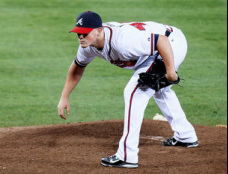 Is the "save" what it used to be? Nasty does not begin to describe the stuff Aroldis Chapman and Craig Kimbrel possess. The two young fireballers have turned into two of the most dominant relief pitchers in all of baseball. Notice I said “relief” pitchers, not closers. Although technically they are perceived as closers, they should not be used in the ninth inning exclusively to “close” out games. Kimbrel is leading the National League in strikeouts per nine innings (K/9), while Chapman is right behind him at 16.35 K/9 and 15.60 K/9 respectively. So, if your team has a one run lead in the 7th inning with the bases loaded and 1 out, why would a manager not go to his best strikeout guy? This is because of the save statistic and the fact that closers are defined by how many saves they can record.
Nowadays, you see a closer, someone who is generally regarded as the team’s best reliever, come into a game more often when the team has a 3 run lead at the start of the ninth inning. The amount of pressure in these situations is drastically different. One way to measure different pressure situations is with leverage index. Leverage index determines the weight of a particular situation due to the inning, score, and outs present at the time. This simplifies pressure-packed or pressure absent at a certain point during the game. For example, the leverage index for a reliever coming in the bottom of the ninth with nobody on and nobody out with a three run lead is 1.0, or in other words, a low leverage situation. On the other hand, a bases loaded, down two, nobody out scenario in the 7th assigns a high leverage number of 4.1. "Firemen" like Chapman and Kimbrel should be used when the pressure is at its highest point in the game. Yes, more often than not, this situation arises before the ninth inning, often representing the turning point of a ball game. However, some teams have done a better job of maximizing their pitcher's ability in pitching higher leverage circumstances. Guys like Fernando Rodney of Tampa Bay and Jim Johnson of Baltimore have emerged as the game’s best relievers and have become poster children for pitching with increased pressure. For example, Johnson leads the league in games entered with high leverage present (leverage index greater than 1.5). On the other hand, Rodney leads all relievers in situational wins saved, a computation of win probability added divided by the leverage index or pressure at a given time. Also, both pitchers rank in the top ten in terms of pitching with high leverage index. In other words, they have pitched the most in pressured packed situations. By maximizing a pitcher's ability and bringing him when the "fire" is its hottest, teams are better able to preserve and secure victories. Again, it is not a coincidence that these teams are either in the playoffs or were in contention until the last week of the season (Tampa Bay). Clearly, pitchers that can come in and shutdown a rally or strikeout somebody out when necessary is crucial to any team’s success. A shutdown or meltdown would be a better way to look at a reliever’s success rather than just look at the save statistic. Shutdowns and meltdowns offer an alternative to the save statistic by simply analyzing whether a pitcher helped or hurt his teams' chances of winning. If a pitcher improved his team's chances of winning by at least 6%, he gets a shutdown. If he hurts his team's chances by 6% or more, then he is awarded a meltdown. This has no silly rules (rule 10.19) to follow and treats all relief pitchers equally (instead of favoring closers like the save statistic implies). Not surprisingly, the aforementioned “closers” have some of the best shutdown ratios in the league (Kimbrel: 37 SD, 4 MD, Chapman: 41 SD, 6 MD, Johnson: 46 SD, 3 MD, Rodney: 34 SD, 2 MD). Yet, even with these excellent numbers, it does not necessarily mean that pitchers are capitalizing on their talent. Would you rather have a middle relief journeyman pitching in a high leverage situation, or a talented flamethrower capable of getting a much needed strikeout? I think the answer is quite obvious and just further illustrates why the current status quo must be changed. |
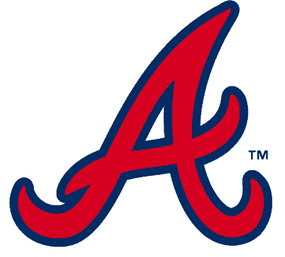
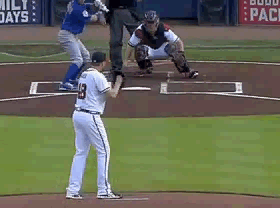
 RSS Feed
RSS Feed